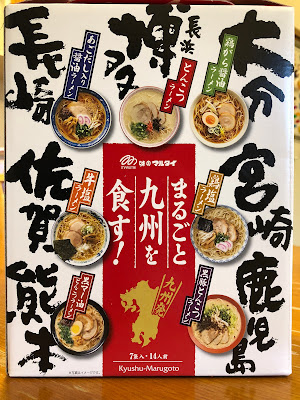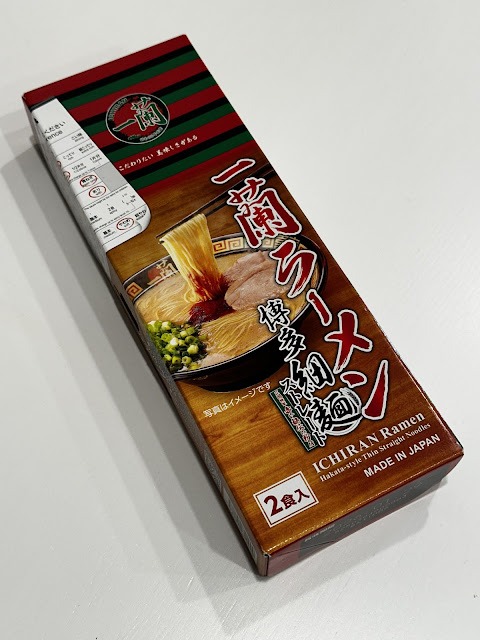How to Outline a Story or Novel
Outlining and My Novel Plotting Methodology
I created a novel plotting methodology here. The methodology is broken up into two main phases. A Brainstorming Phase and an Iterative Writing Phase. I explained why I use this methodology here.
In the Brainstorming Phase, the third step is to outline. To me, outlining is simple, and it is part of my toolkit for creating project plans, gathering requirements, for use in story mapping, mind mapping, etc. I have outlined for hundreds of different types of projects, not necessarily for fiction, but the key techniques are the same.
Before the Outline
This article assumes you have completed the ideation steps where you brainstorm your story concepts, characters, events, scenes, etc. You also know what your ending is going to be (at least your original ending 😊 ).
To recap, the following things should have been done before you outline.
- You have jotted down all the ideas you have for your story. It could be characters, settings, themes, or plot points.
- You have identified the main idea your story is about. This will serve as the backbone of your story.
- You have a common thread that ties together your ideas and defines the overall message or purpose of your story (it might even be a real theme).
- You have a rough plot structure, with an approximate beginning, middle, and end. You probably have ideas about the inciting incident, major turning points (conflicts, climax), and resolution.
- You have defined your people, creatures, or beings that will inhabit your story and given them personalities, motivations, and goals.
- You have defined your main characters and their motivations, goals, and conflicts.
- Sum up your story's main idea, characters, and plot in a single sentence or short paragraph.
Building the Outline
In your outlining you don’t do this right off the bat.
Write a detailed outline of your story, including a description of each scene, character development, and dialogue.
This is jumping ahead and will get you stuck in the weeds and unable to see the big picture. Start from generalities and organize your ideas.
An outline in its simplest form organizes your ideas and plot points into a sequential format that leads from a beginning of a story to the end of it. This should start as a simple bullet point list of sentences (don’t number yet to keep it flexible). Alternatively, each bullet point should be able to fit on 3” x 3” square sticky and you can create the outline with stickies on a wall or a board. The goal here is to get all the story ideas down and put them into an ordered sequence.
At this point you will probably notice that not all your stickies are going to be story events or scenes. Group all of the story events or scenes together now. Organize these in the order you think the story should flow. Now take those other bullet points and subgroup them by the scene / event bullet they belong to. Those other bullet points are likely details for an event / scene, character moments, notes about info to present, the result of a scene, reminders to you, background info, etc.
When you are done, this is your initial outline. An example of this follows:
- Year 1932. New York
- They meet while pilfering the clue from a mafia mobster's mansion
- Ohio Jones, world famous treasure hunter is on the trail of a Spanish medallion engraved with half of the clue to the lost city of gold.
- Sarah Smith, cat burglar and treasure seeker has the other half of the clue.
- They have met before.
- The safe is hidden in the study and only Sarah can open it.
- The two escape and have drinks.
- Chased by goons, Sarah shows off her gymnastics.
- Sarah drugs Ohio's drink, steals the medallion from Ohio.
- Ohio thought their meeting would be different this time.
- Ohio tracks her down in Central America where he knew she would start the next leg of the quest for the city.
- They confront at a shady outfitter's business, vying for his services.
- ETC...
You can now analyze your outline with its bullets and sub-bullets.
- Do you have all of the scenes/events you need to fill in the story? Are there gaps?
- Think about transitional scenes to fill in information, provide some comedy relief, or character development.
- Are some scenes/events too large and need to be broken down? Conversely, are some events too small and need to be aggregated?
For example, the scene is raid the secret base – well what happens in said scene? Will it need a scene for:
- entry/infiltration
- sneaking down halls and neutralizing guards
- battle in the control room
- pursuit and escape from the base
All those other bullet points now kick in. They provide details about your backstory, scenes, and characters. They are the character development and key pieces of information you want to present in that scene/event. For example, if you follow all the bullets for a character, do you see a character development arc or does it paint a good picture of that character?
You now revise and expand your outline refine the story's structure and add depth to its characters and themes. You fill in gaps, add information, add scenes/events. The outline is a living document that changes as you build it from your ideas. After working with this outline for awhile, making sure you are satisfied with the plotting, pacing, character development, you can now build a more detailed chapter-by-chapter outline by organizing the related scenes/events into chapters. In some cases, your scene/event might be the chapter too – lucky you.
Final Words
The goal of outlining is to have a clear understanding of your story's structure, so that you can build your Plot Cards in the Iterative Writing Phase if you are using my methodology and just to stay focused as you write. I have included a number of simplistic outlines here for the same story to give you an idea about how the various story structure techniques compare. These examples are just generally plot focused without a lot of details or character sketches. If you were doing the actual brain storming, you’d have lots of the other details as sub-bullets below the main points along the way!
Example of a Simple Outline of an Archeological Action Novel.
This example uses a simple bulleted list to illustrate a basic outline. In actual use, you would likely have many sub-bullets too, but this is a good high-level summary of the story's structure.
- Protagonist introduced: An archeologist named (Protagonist)
- Protagonist's mission: To find the lost city
- Mysterious artifact: The protagonist learns about a mysterious artifact that could lead to the location of the lost city
- Rival archeologist: A rival archeologist approaches the protagonist, who is also searching for the lost city
- Setting out on the journey: The protagonist sets out to find the artifact and the lost city
- Navigating obstacles: The protagonist and the rival navigate the dangerous traps and obstacles in their way
- Finding the artifact and the location of the lost city: The protagonist finds the artifact and the location of the lost city
- The enemy is revealed: The protagonist discovers that the lost city is in the hands of a powerful enemy who is using the city's traps to protect it
- Teaming up with the rival: The protagonist and the rival team up to defeat the enemy and retrieve the lost city
- Uncovering the secrets: The protagonist and the rival navigate the dangerous traps in the lost city and uncover its secrets, including the location of the mysterious artifact
- Bringing the artifact back: The protagonist returns home with the artifact and their newfound knowledge of the lost city
Story Structure Techniques To Help You Outline
The creation, revision, and organization of your outline can also benefit from using a story structure technique to guide its creation. I described a generic idea-driven brainstorming approach above. There are other ways to help outline a novel, and you can use several story plotting methods such as the Three-Act Structure, The Beat Sheet, and the Elaboration Method.
I’m not going to go into detail about each of these methods, but here are three outline examples of the same Archeological Action Novel using each of the story plotting methods above.
Example Outline of an Archeological Action Novel in a Three-Act Structure:
The Three-Act Structure: This method involves dividing the story into three main parts: setup, confrontation, and resolution. This is a classic method and it is simple in concept.
Act 1: Introduction of the main characters and their motivations, setting up the story's conflict.
Act 2: Rising action as the conflict becomes more complicated, leading to a climax.
Act 3: Resolution of the conflict and the conclusion of the story.
- Act 1 - Setup
- Introduction of protagonist, an archeologist, who is searching for a lost city
- The protagonist learns about a mysterious artifact that could lead to the location of the lost city
- The protagonist is approached by a rival archeologist who also wants the artifact
- The protagonist decides to go after the artifact and the lost city
- Act 2 - Confrontation
- The protagonist and the rival archeologist travel to the location of the artifact
- The protagonist discovers that the lost city is protected by dangerous traps and obstacles
- The protagonist and the rival archeologist work together to navigate the traps and obstacles
- The protagonist finds the artifact and learns the location of the lost city
- Act 3 - Resolution
- The protagonist sets out to find the lost city and discovers that it is in the hands of a powerful enemy
- The protagonist and the rival archeologist team up to defeat the enemy and retrieve the lost city
- The protagonist and the rival archeologist discover the secrets of the lost city
- The protagonist returns home with the artifact and the knowledge of the lost city
Example Outline of an Archeological Action Novel Using the Beat Sheet Method:
The Beat Sheet: This method involves breaking the story into key turning points and plot points, often using the structure of a screenplay as a guide. The Blake Snyder Beat Sheet is a popular technique.
- Opening Image: The protagonist is introduced as an archeologist searching for lost cities.
- Theme Stated: The protagonist learns about the mysterious artifact that could lead to the location of the lost city.
- Set-Up: The protagonist is approached by a rival archeologist who also wants the artifact.
- Catalyst: The protagonist decides to go after the artifact and the lost city.
- Debate: The protagonist debates the best way to find the artifact and the lost city, considering the dangers involved.
- Break into Two: The protagonist sets out to find the artifact and the lost city.
- B Story: The rival archeologist helps the protagonist navigate the traps and obstacles in their way.
- Fun and Games: The protagonist and the rival archeologist work together to find the artifact and the lost city.
- Midpoint: The protagonist discovers the location of the lost city and sets out to find it.
- Bad Guys Close In: The protagonist discovers that the lost city is in the hands of a powerful enemy.
- All is Lost: The protagonist and the rival archeologist face defeat at the hands of the enemy.
- Dark Night of the Soul: The protagonist reflects on their journey and their motivations for finding the lost city.
- Break into Three: The protagonist and the rival archeologist team up to defeat the enemy and get free access to the lost city.
- Finale: The protagonist and the rival archeologist discover the secrets of the lost city and return home with new artifacts and their newfound knowledge.
- Final Image: The protagonist reflects on their journey and their success in finding the lost city.
Example Outline of an Archeological Action Novel Using the Elaboration Method:
The Elaboration Method: This method involves starting with a basic idea and then gradually adding more detail to each stage of the outline until you have a complete plan for your novel. The Snowflake Method is a type of elaboration.
Step 2: Expand the summary into a paragraph: An archeologist named (Protagonist) is on a mission to find a lost city that has been the subject of many legends. They learn about a mysterious artifact that could lead to the location of the lost city and set out to find it. Along the way, they encounter a rival archeologist who also wants the artifact. Despite the rival's competition, the protagonist and the rival team up to navigate the dangerous traps and obstacles in their way. They finally find the artifact and the location of the lost city, only to discover that it is in the hands of a powerful enemy. The protagonist and the rival must defeat the enemy and retrieve the lost city in order to uncover its secrets.
Step 3: Develop characters and setting:
- Protagonist: An archeologist who is passionate about their work and determined to find the lost city. They have a strong sense of adventure and a willingness to take risks.
- Rival archeologist: A rival archeologist who is also searching for the lost city. They are initially seen as a threat, but the protagonist ultimately relies on them to help navigate the dangerous traps and obstacles.
- Powerful enemy: The powerful enemy who controls the lost city and stands in the way of the protagonist and the rival.
- Setting: The location of the lost city is a remote and dangerous jungle filled with traps and obstacles.
Step 4: Expand the paragraph into a one-page summary:
The protagonist and the rival archeologist set out on a dangerous journey to find the lost city and the mysterious artifact that could lead to its location. Expand on how do they meet and what leads them to make an alliance and any tensions that ensue.
They encounter many challenges along the way, including traps and obstacles, but eventually find the artifact and the location of the lost city. Expand this into a full paragraph describing the traps and obstacles to overcome and what exactly the artifact is and any puzzles around it.
However, they soon discover that the lost city is in the hands of a powerful enemy, and they must work together to defeat the enemy and retrieve the lost city. Expand on what the powerful enemy is and how they are protecting and holding the city for what purpose. Do the archeologists get captured and must escape too?
The protagonist and the rival face many dangers, but ultimately succeed in their quest, uncovering the secrets of the lost city and bringing the artifact back home. Expand on what types of battles or dangers they need to overcome and the strains on their alliance.
Step 5: Create a scene list:
- Introduction of the protagonist and their mission to find the lost city.
- The protagonist learns about the mysterious artifact.
- The rival archeologist approaches the protagonist.
- The protagonist sets out to find the artifact and the lost city.
- The protagonist and the rival navigate the dangerous traps and obstacles.
- The protagonist finds the artifact and the location of the lost city.
- The protagonist discovers that the lost city is in the hands of a powerful enemy.
- The protagonist and the rival team up to defeat the enemy.
- The protagonist and the rival retrieve the lost city and uncover its secrets.
- The protagonist returns home with the artifact and their newfound knowledge.
I hope you enjoyed reading this little article, it was fun to put together, and I hope you get some ideas or inspiration from it!
Plotting versus Pantsing - My Novel Plotting Methodology Answer
Novel Plotting Methodology Overview (Use Your Story Structure of Choice)













Comments
Post a Comment